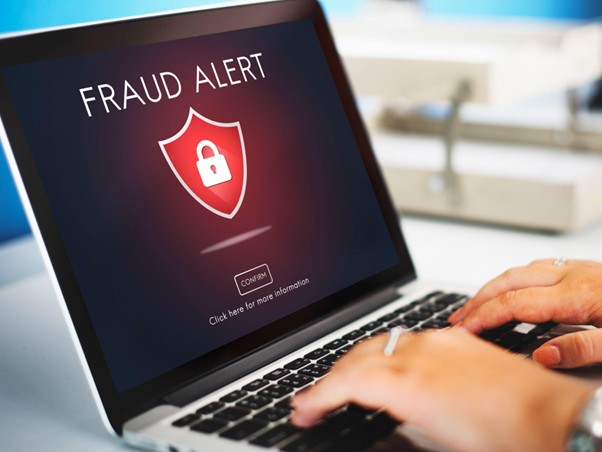
Regardless of size or industry, all companies are exposed to potential cyber threats. Digitalization has brought countless benefits to today’s world, but as technology has evolved, so have the strategies used by cybercriminals to access and compromise company data and operations. Implementing computer network security has become a must.
In recent years, cyberattacks have increased exponentially, posing a serious risk to organizational security. To effectively combat any type of network threat, cybersecurity solutions need to be adaptive.
Network security encompasses a set of processes and tools aimed at protecting the infrastructure of servers, communication systems, IT systems, databases, files, and all types of technological devices. This protection focuses on addressing four main threats: data theft and hijacking, vandalism and data destruction, fraud and identity theft, and privacy invasion.
How Can Computer Security Be Improved?

To reduce the likelihood of attacks that affect the integrity, availability, and confidentiality of data, here are some of the most effective measures to safeguard your business information:
1. Train Your Teams
According to the latest Global Risks Report, most cybersecurity issues originate from human error.[1] Therefore, training your staff is essential to prevent and mitigate damage and improve network protection.
2. Use Antivirus, Antimalware, and Cloud Protection
Optimal network security also requires keeping all technological devices up to date with solutions such as antivirus, antimalware, and firewalls. A good firewall protects your network from unauthorized access, while antivirus software detects and eliminates malware before it can cause harm.
Additionally, data encryption ensures that even if someone gains access to your information, they cannot understand it without the correct key. Cloud security solutions provide an extra layer of protection by securely storing data with controlled access.
3. Use a VPN
A Virtual Private Network (VPN) allows a secure connection between a private server and client devices over public networks. This means that, when browsing the Internet, the data sent and received is encrypted so that third parties cannot read or steal it.
4. Implement Robust Security Policies
One of the cornerstones of protecting your company’s information is the creation of clear and consistent security policies. This involves defining specific protocols regarding who can access certain data and how it may be used. Two key techniques to support this include:
- Role-Based Access Control (RBAC): Assigns access permissions based on each employee’s role, limiting access to sensitive information only to those who need it to perform their job.
- Authentication Systems: Implement identity verification systems to control access to digital information. Multi-factor authentication adds an extra layer of security, making unauthorized access more difficult.
5. Endpoint Protection
Endpoints scan files as they enter the network, allowing cybersecurity professionals to remotely control the security of each device. This solution can push updates to endpoints, authenticate login attempts from each device, and manage corporate policies from a single location.
Endpoint platforms can quickly detect malware and more advanced threats, manage application usage, block others, and use encryption to help prevent data loss.
6. Perform Regular Backups
Backups are essential to ensure that, in the event of an attack, data can be recovered and not permanently lost. Regularly backing up all critical data protects your business from unexpected incidents. Moreover, this cloud-based backup tool is extremely useful in cases of stolen equipment, short circuits, fires, or any other event that could damage your systems and devices.
7. Conduct Vulnerability Testing
These assessments involve simulating planned attacks on your cybersecurity systems to detect weaknesses, vulnerabilities, and risks. This enables the implementation of network security services that can enhance your company’s digital security against cyberattacks.
8. Seek Expert Advice
It may seem obvious, but the best way to ensure your systems are constantly ready for any eventuality is to consult cybersecurity experts. At LevelBlue, we manage risk and handle your company’s security so you can focus on what you do best.
Vulnerable Areas: What Are the Most Exposed Points?

Not all systems or their stages are equally secure. Some areas of networks are more vulnerable to cyberattacks due to their specific characteristics.[2] The most failure-prone include:
- File sharing always carries the risk of malware infection or interception by hackers.
- Email, a major channel for spreading malware. It is a common vector for phishing, data theft, and virus transmission through attachments and links.
- Outdated programming languages, operating systems, and software increase the risk of malware infections.
- Hidden extensions in supposedly safe downloaded and opened files.
- Messaging platforms and chatbots can also transmit malware via attachments and links. Always make sure you know your recipient before sharing confidential information.
Boost Your Cyber Defense to the Next Level
In today’s landscape, cyberattacks are not only more frequent but also increasingly sophisticated, making it crucial for organizations of all sizes to adopt proactive security measures. One common misconception is that malicious activity only targets large corporations and multinational companies. The truth is, every organization, regardless of its size or industry, is exposed to cyber threats and should prepare accordingly.
Therefore, having a comprehensive and adaptive computer and network security strategy is essential. At LevelBlue, we specialize in providing comprehensive protection to keep your networks and devices secure at all times. Achieving optimal network security is not a simple task, it requires expert guidance, continual evaluation, and strategic implementation of tailored tools and services that suit your business needs.
Adapt to an Evolving Threat Landscape
Cybersecurity is not a one-time fix. The threat landscape is constantly evolving, and so must your defenses. This means staying informed about the latest trends in malware, ransomware, phishing techniques, and data breach tactics. Regular security audits and real-time monitoring tools help identify anomalies early and contain threats before they can escalate into major incidents.
At LevelBlue, we go beyond standard protocols to offer scalable solutions that grow with your business. Our expert team is constantly analyzing emerging threats to enhance your protection. From endpoint defense to cloud-based backups and employee training, our holistic approach ensures no part of your infrastructure is exposed.


